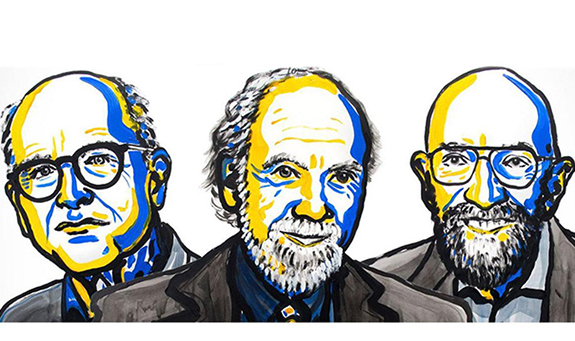Swinburne congratulates 2017 Nobel Prize winners

In Summary
- Swinburne congratulates US Professors Rainer Weiss, Barry C Barish and Kip S Thorne for winning the 2017 Nobel Prize for physics
- The discovery of gravitational waves is one of the greatest intellectual achievements in physics
Swinburne congratulates the winners of this year’s Nobel Prize in physics for their leadership in the revolutionary discovery of gravitational waves.
Swinburne hosts the $31.3 million Australian Research Council Centre of Excellence for Gravitational Wave Discovery (OzGrav) which was established to capitalise on the gravitational wave discovery led by the three US Nobel prize winners.
Director of OzGrav, Swinburne’s Professor Matthew Bailes, has congratulated Professors Rainer Weiss, Barry C Barish and Kip S Thorne, describing the discovery as one of the greatest intellectual achievements in physics.
OzGrav scientists and engineers are part of a 1000-member scientific community which helped contribute to the discovery of gravitational waves.
Australia’s Minister for Education and Training, Simon Birmingham, also congratulated the 2017 Nobel Prize winners.
“OzGrav is helping Australia stay at the cutting edge of this new and rapidly advancing field,” Senator Birmingham says.
“It will capitalise on the first detections of gravitational waves, to understand the extreme physics of black holes and warped space-time.”
Professor Bailes described the Nobel laureates as international leaders in the field, which has ultimately opened a new window to the Universe.
He says the discovery verified that Einstein’s 1915 masterpiece, the General Theory of Relativity, is an accurate description of gravity and the motions of the stars and planets.
Many of OzGrav’s chief investigators have dedicated almost their entire scientific careers to developing the technology and methods to advance the field of gravitational wave research.
Professor Bailes, has paid tribute to the leadership of the Laser Interferometer Gravitational-wave Observatory (LIGO), which collated the data that led to the discovery.
“When I first heard talk of the LIGO detector during a visit to Caltech it seemed fanciful,” he says.
“The technology required seemed too ambitious, and the targets very uncertain. But today’s prize is a fitting reward to the visionaries who persisted over decades with the scientific, technological, sociological and political challenges of building one of the great observatories of the world.
“It has taken the pulse of the Universe and opened a treasure trove for fundamental physics research.”
Swinburne is also home to a new purposely designed $4 million supercomputer to aid OzGrav researchers in the search for gravitational waves.

